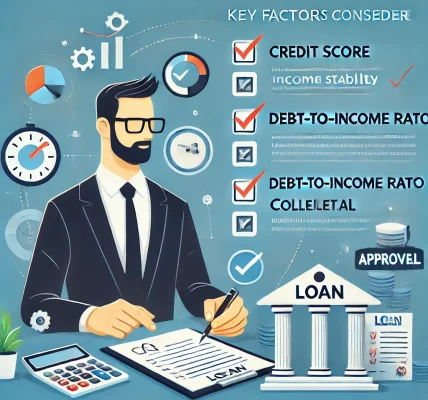Introduction
Loan forgiveness and settlement policies are financial relief options designed to help borrowers who are struggling to repay their loans. These policies can be beneficial in reducing or eliminating outstanding debt, but they come with specific eligibility criteria and legal considerations. In this blog, we will explore how loan forgiveness and settlement policies work, their pros and cons, and how borrowers can benefit from them.
What is Loan Forgiveness?
Loan forgiveness is a program in which a lender, often a government agency or private financial institution, cancels a borrower’s remaining loan balance. This is typically available for certain types of loans, such as student loans or government-backed small business loans.
Common Types of Loan Forgiveness Programs
- Public Service Loan Forgiveness (PSLF) – For borrowers working in government or non-profit organizations.
- Teacher Loan Forgiveness – For educators teaching in low-income schools.
- Income-Driven Repayment (IDR) Forgiveness – After making payments for a set number of years under income-driven plans, the remaining balance is forgiven.
- Small Business Loan Forgiveness – Certain government-backed loans, such as Paycheck Protection Program (PPP) loans, may be forgiven if conditions are met.
What is Loan Settlement?
Loan settlement is a process in which a borrower negotiates with a lender to pay a reduced amount instead of the full outstanding balance. Unlike loan forgiveness, settlement does not eliminate the full debt but provides an opportunity to pay off a portion of it and close the account.
How Loan Settlement Works
- Financial Hardship Evaluation – Lenders assess the borrower’s financial situation.
- Negotiation Process – The borrower or a debt settlement company negotiates with the lender.
- Settlement Offer Acceptance – The lender agrees to accept a lump sum or structured payments.
- Debt Resolution – Once the agreed amount is paid, the lender marks the loan as settled.
Key Differences Between Loan Forgiveness and Loan Settlement
| Feature | Loan Forgiveness | Loan Settlement |
|---|---|---|
| Debt Reduction | Full or partial forgiveness | Partial reduction only |
| Eligibility Criteria | Strict, usually based on profession or income | Based on financial hardship |
| Credit Impact | Generally positive or neutral | Negative impact on credit score |
| Process Time | Can take several years | Typically resolved within months |
Pros and Cons of Loan Forgiveness and Settlement
Advantages
- Loan Forgiveness: Eliminates debt burden, improves financial stability, and may have minimal impact on credit score.
- Loan Settlement: Reduces outstanding debt, avoids legal action, and provides an alternative to bankruptcy.
Disadvantages
- Loan Forgiveness: Limited eligibility, complex application process, and potential tax liabilities on forgiven amounts.
- Loan Settlement: Negative impact on credit score, may require a lump sum payment, and not all lenders agree to settle.
How to Apply for Loan Forgiveness or Settlement
Steps for Loan Forgiveness
- Check Eligibility: Determine if your loan qualifies under a forgiveness program.
- Submit an Application: Fill out the required forms with supporting documentation.
- Continue Making Payments: Some programs require consistent payments until approval.
- Monitor Approval Process: Stay in touch with your lender to track progress.
Steps for Loan Settlement
- Assess Financial Situation: Ensure that settlement is the best option for you.
- Contact Your Lender: Initiate negotiations for a reduced settlement amount.
- Get the Agreement in Writing: Ensure the terms are documented.
- Make the Agreed Payment: Pay the settlement amount as per the agreement.
Legal Considerations
- Forgiven loan amounts may be considered taxable income.
- Loan settlement can remain on your credit report for up to seven years.
- Always consult a financial advisor before pursuing settlement or forgiveness options.
Conclusion
Loan forgiveness and settlement policies offer crucial financial relief to borrowers facing difficulties. Understanding the differences between these options, eligibility requirements, and their potential impacts can help borrowers make informed decisions. If you are struggling with loan repayment, consider exploring these programs to find the best solution for your financial situation.



